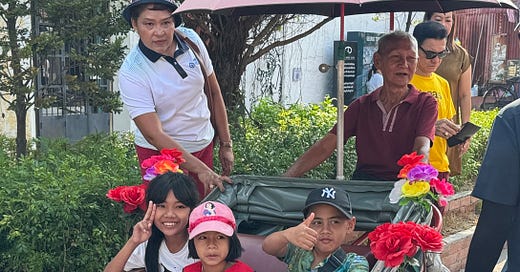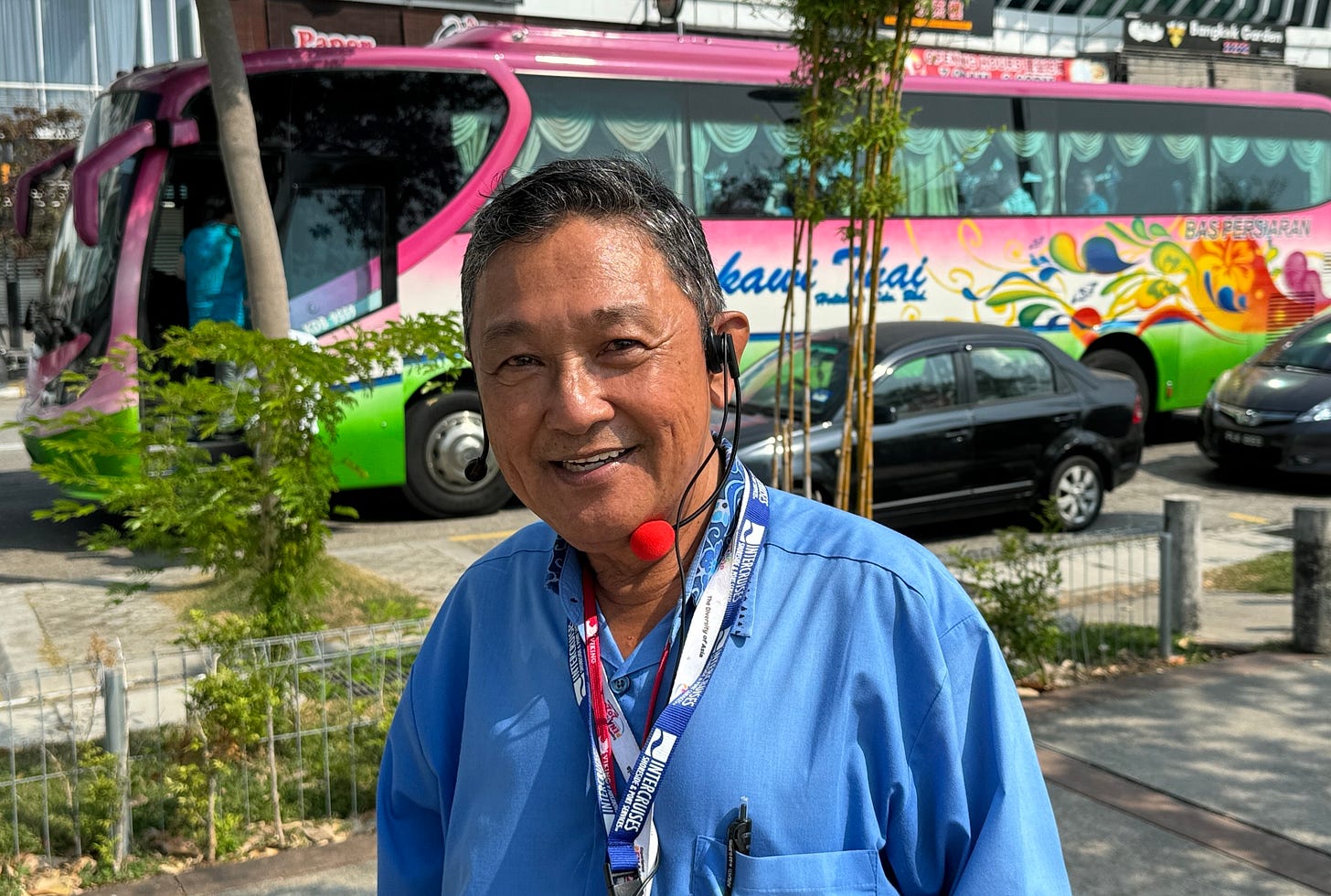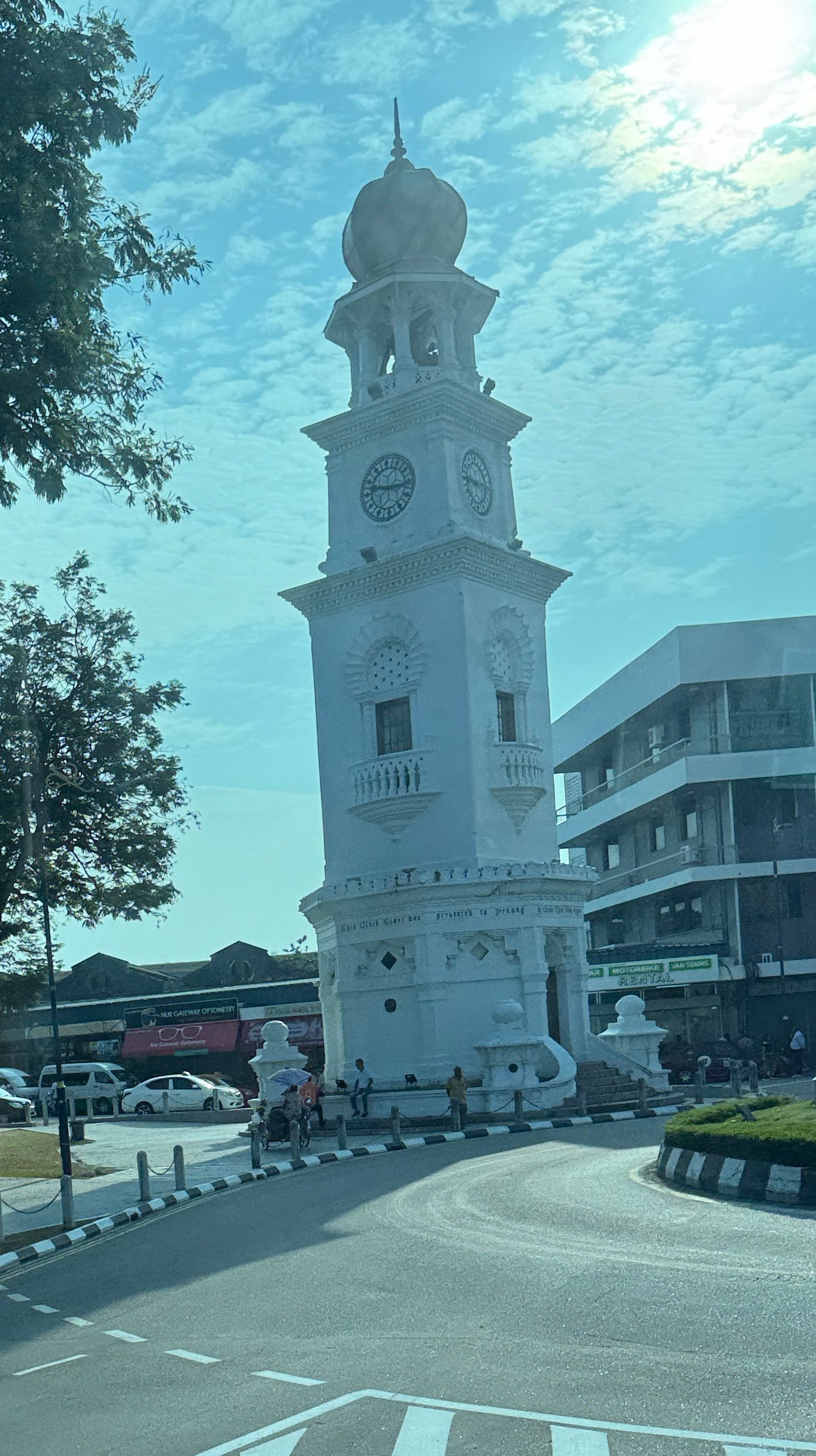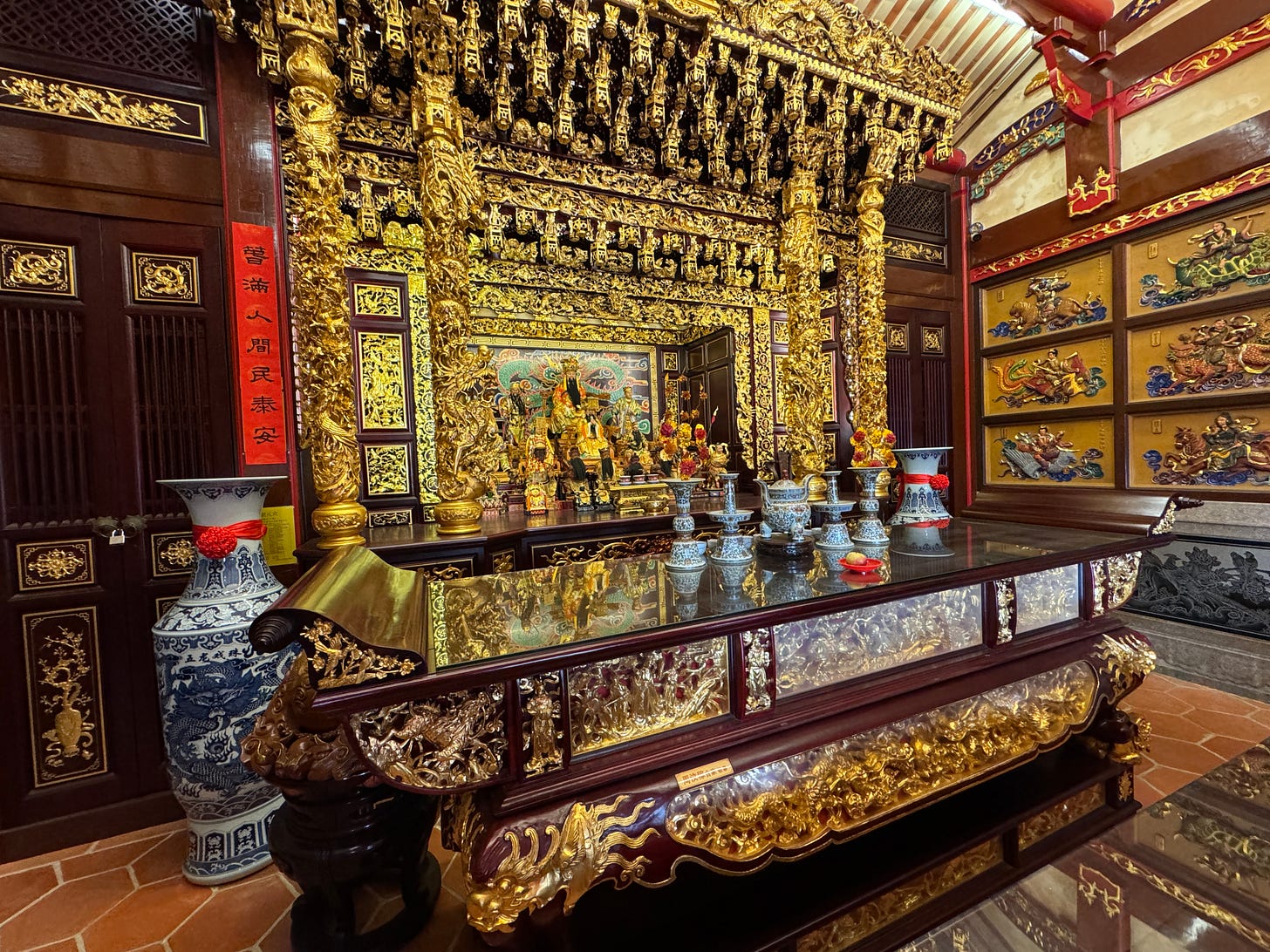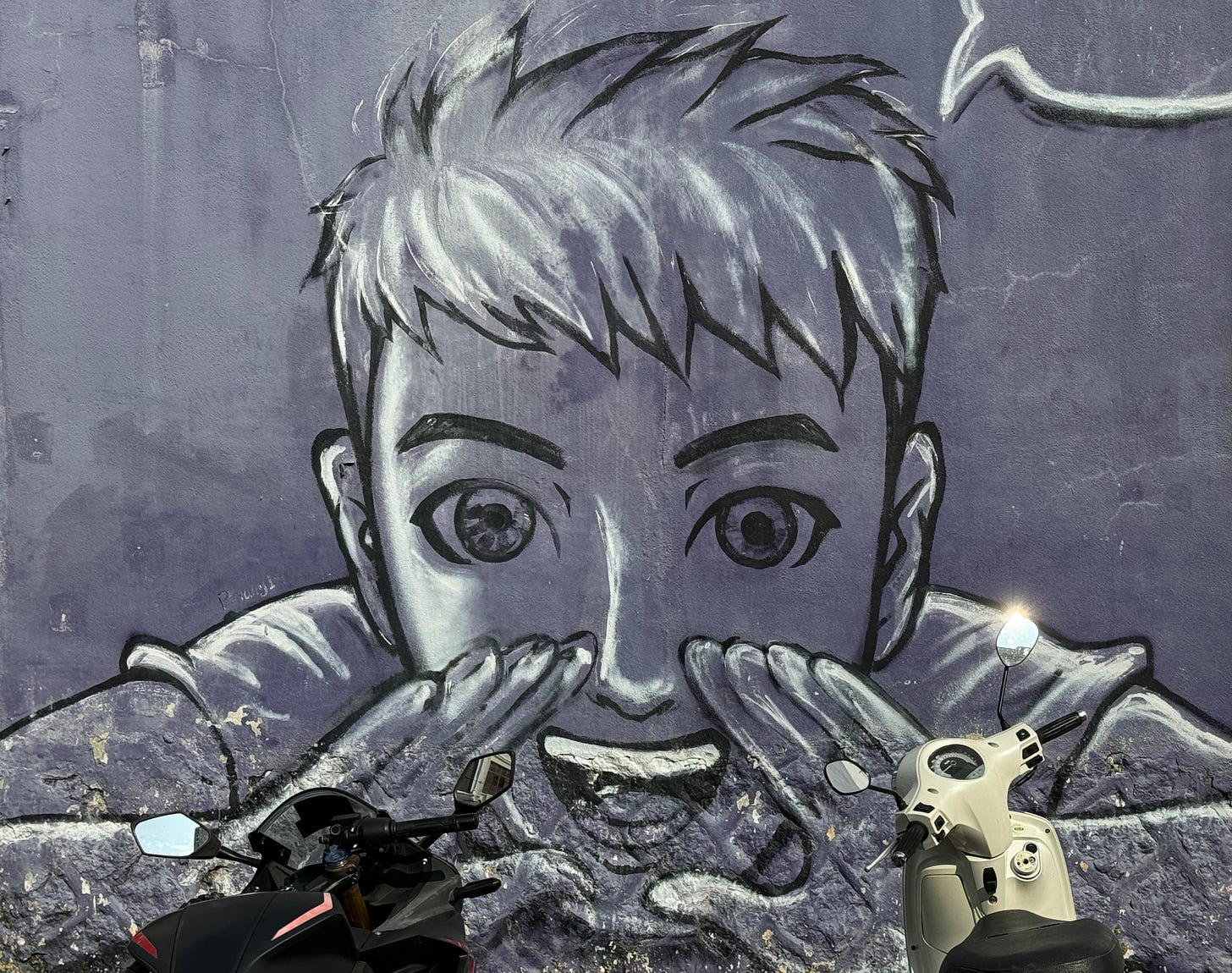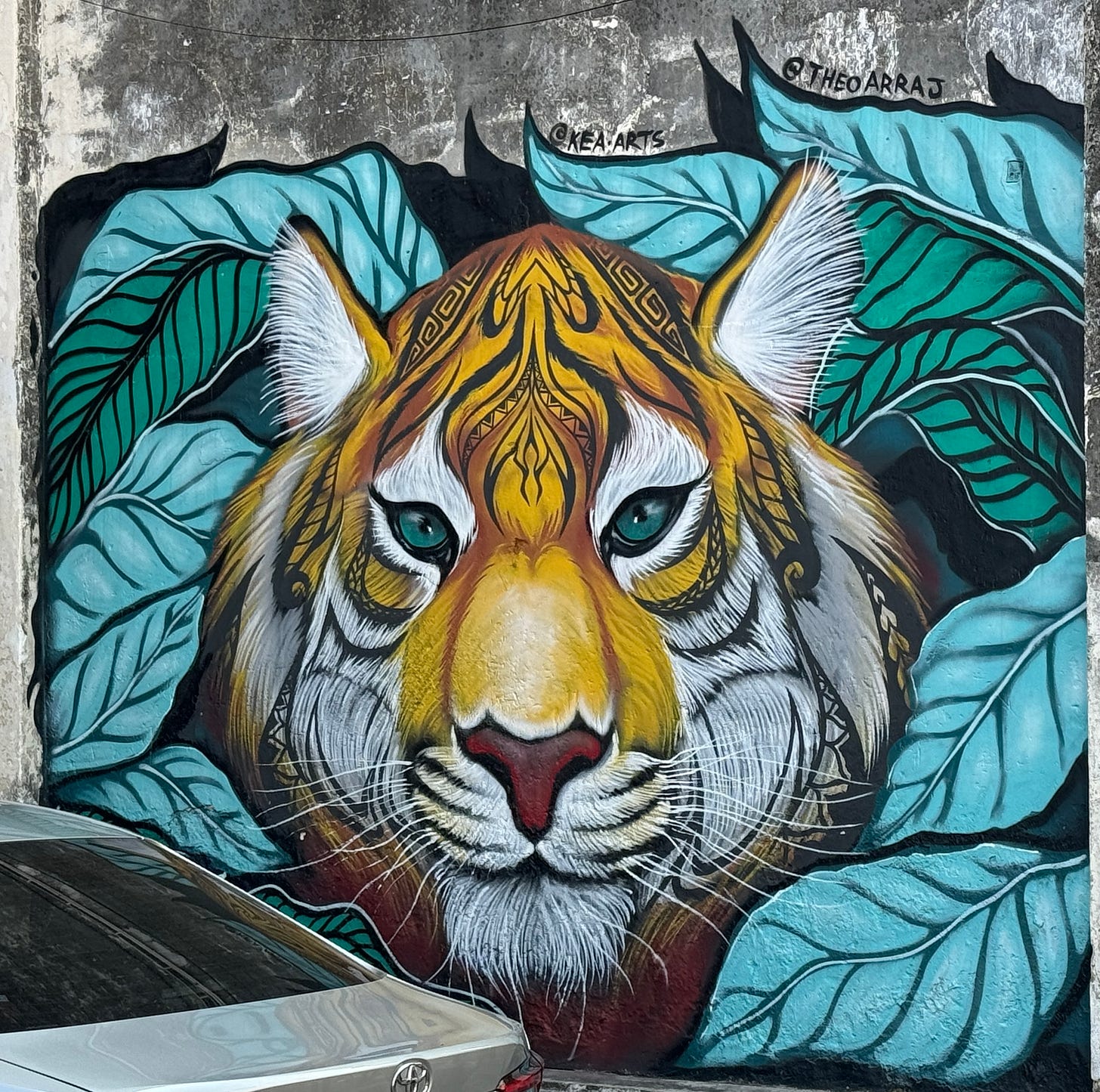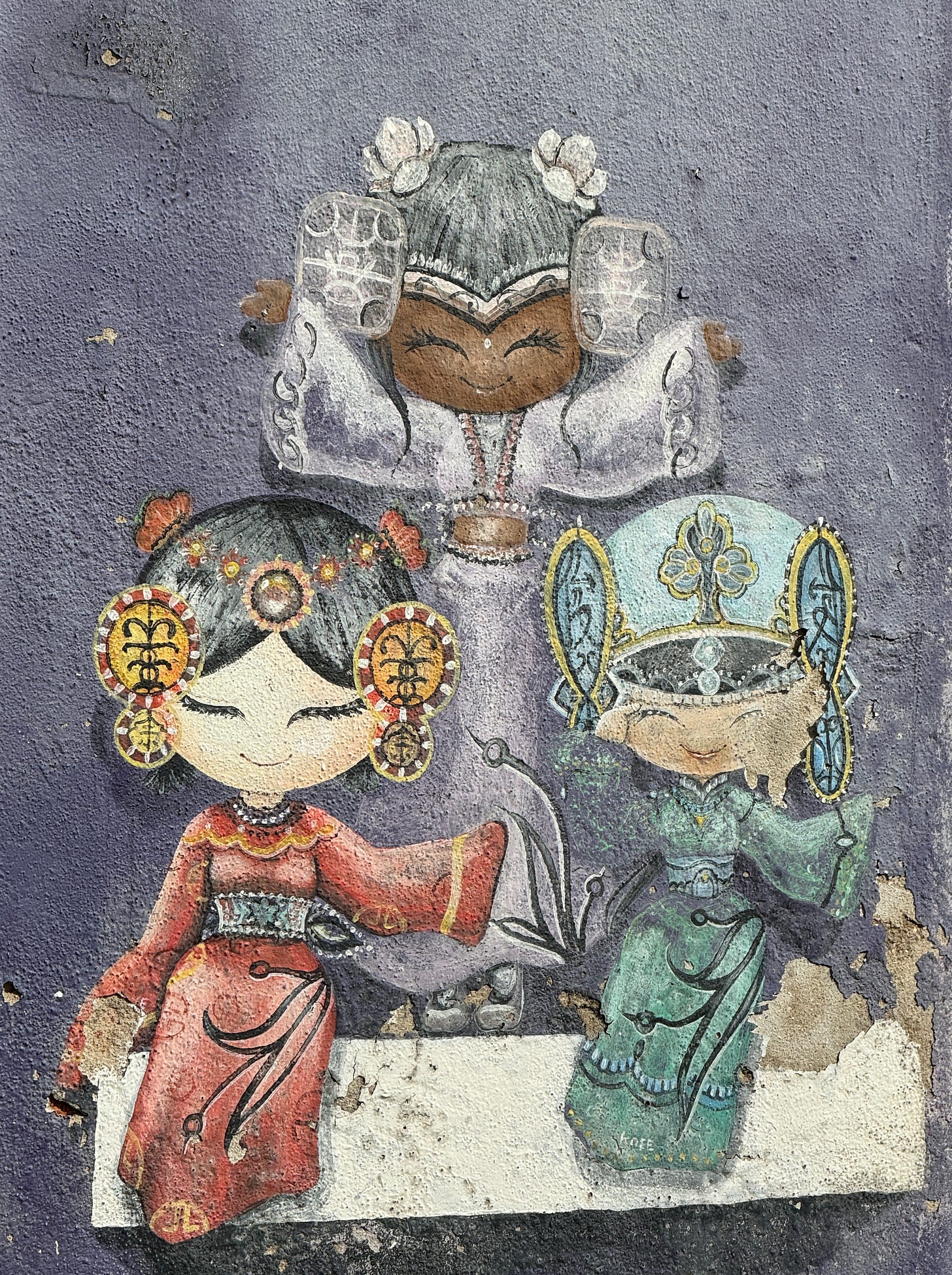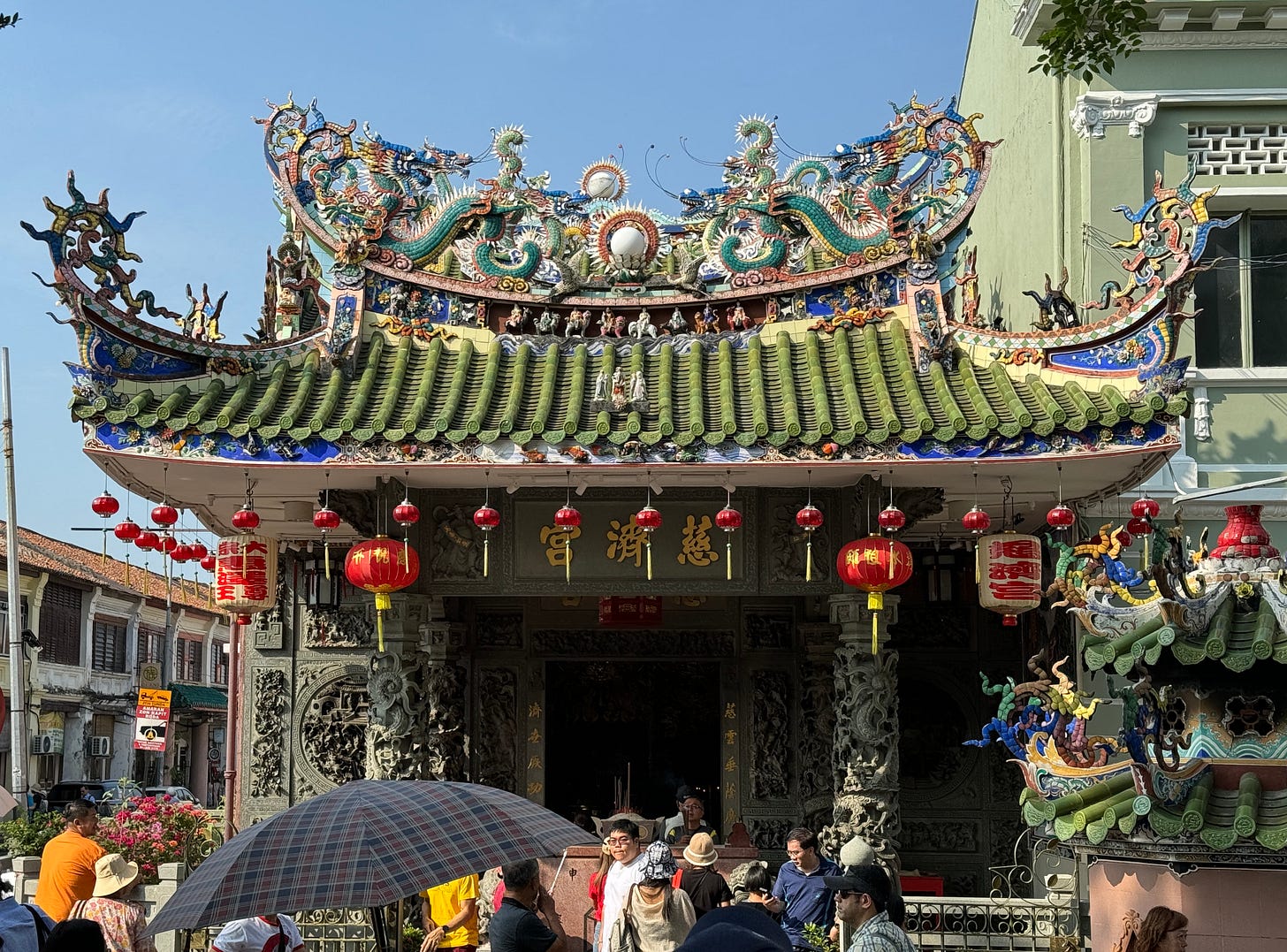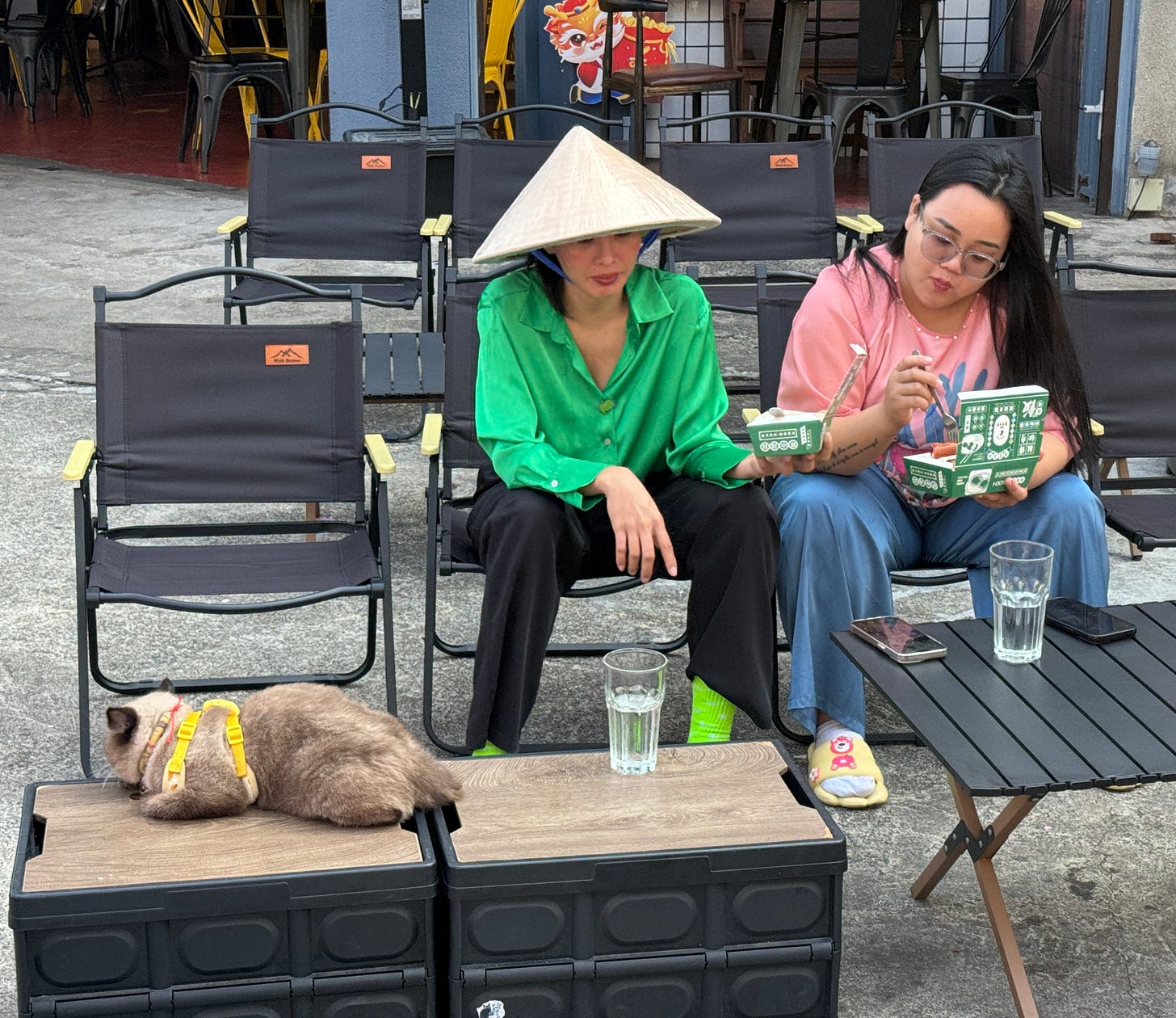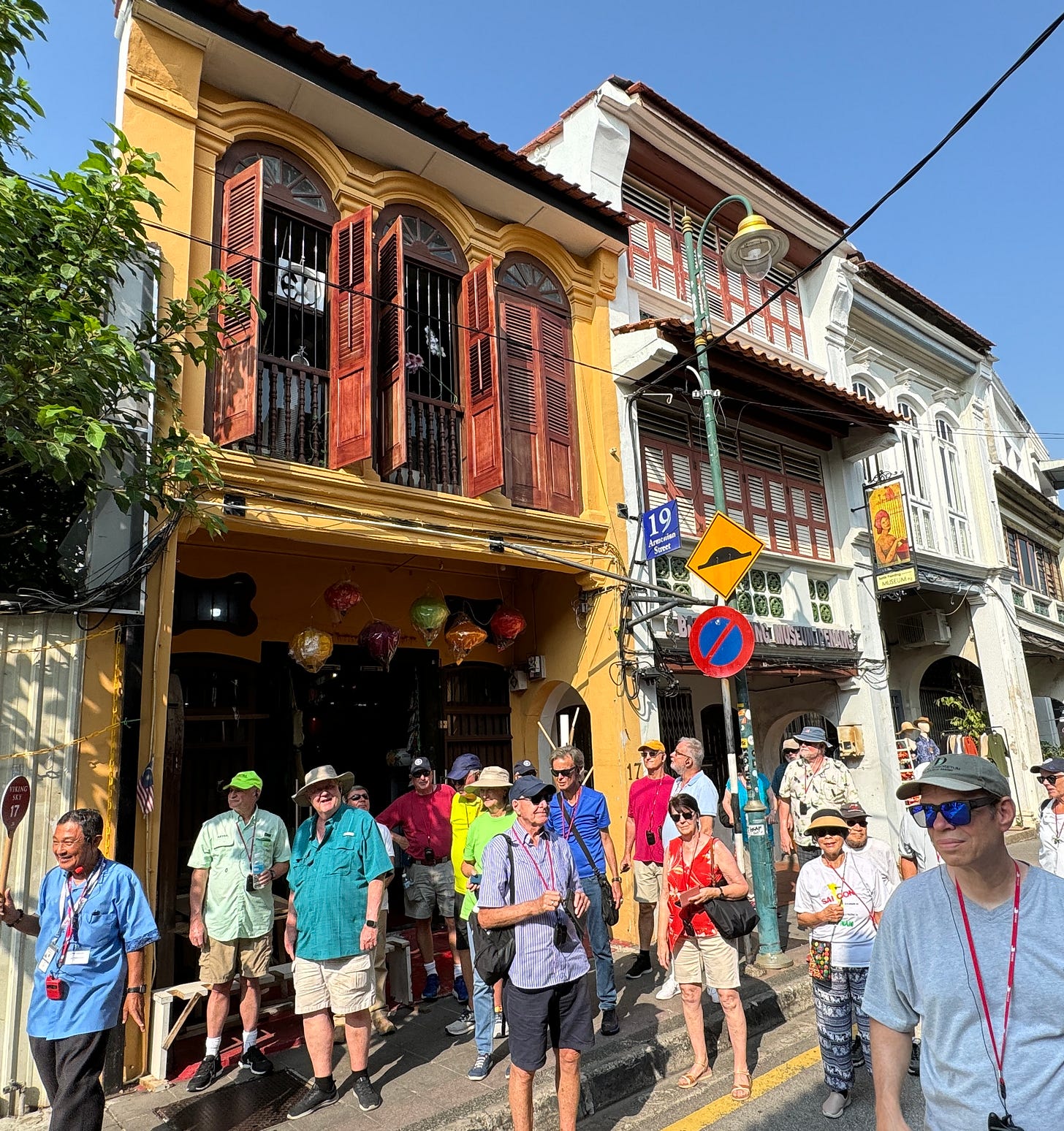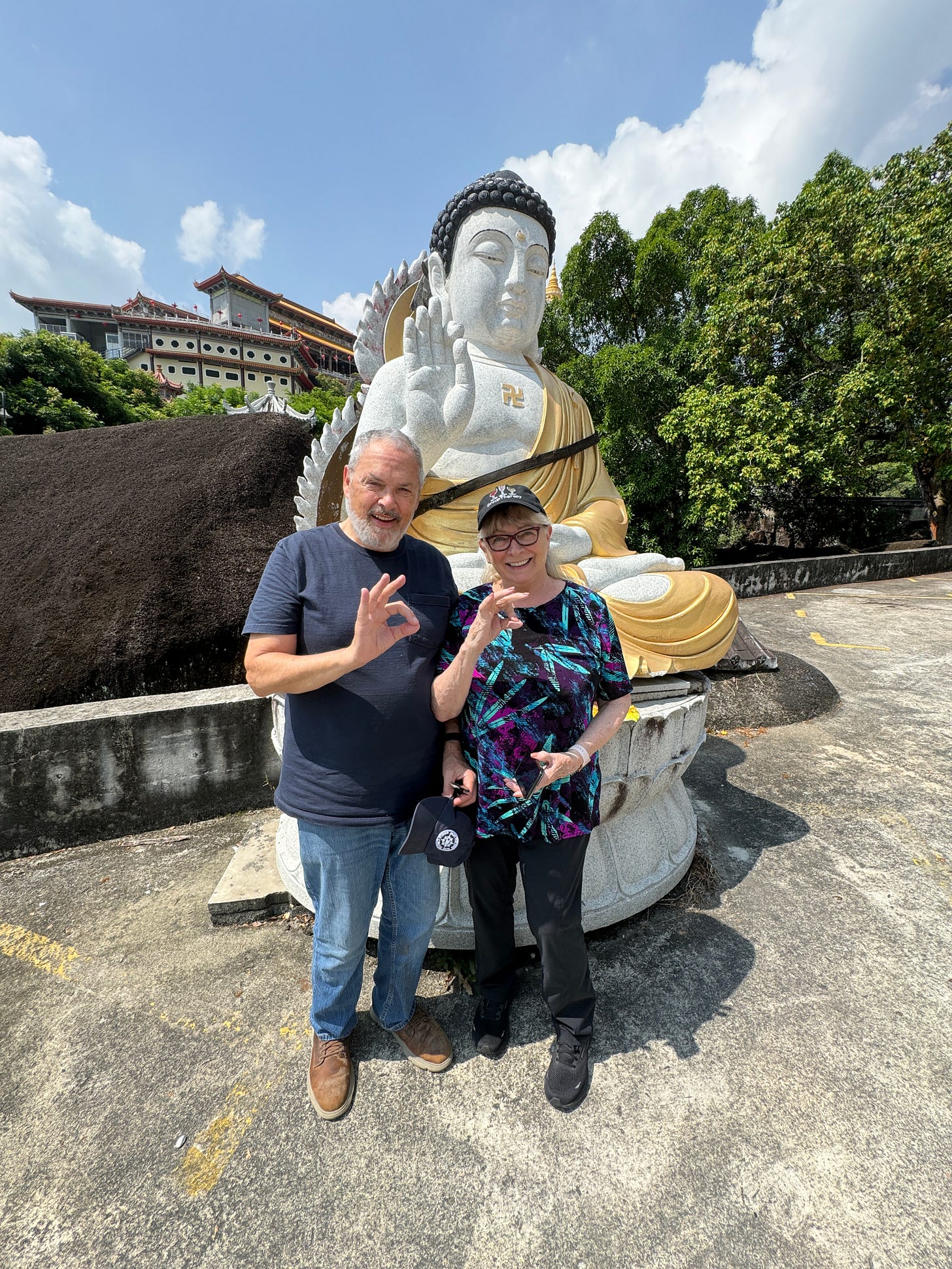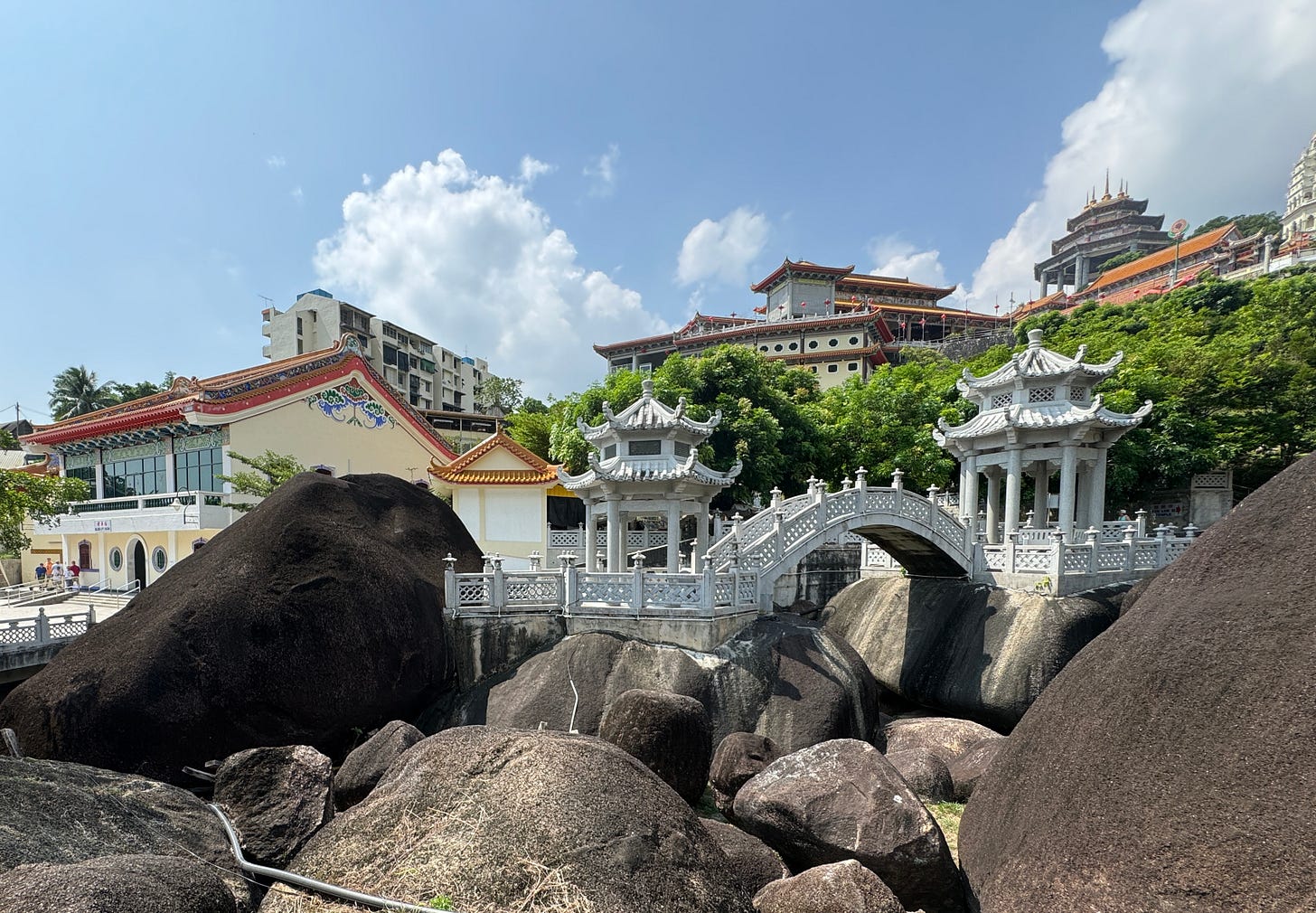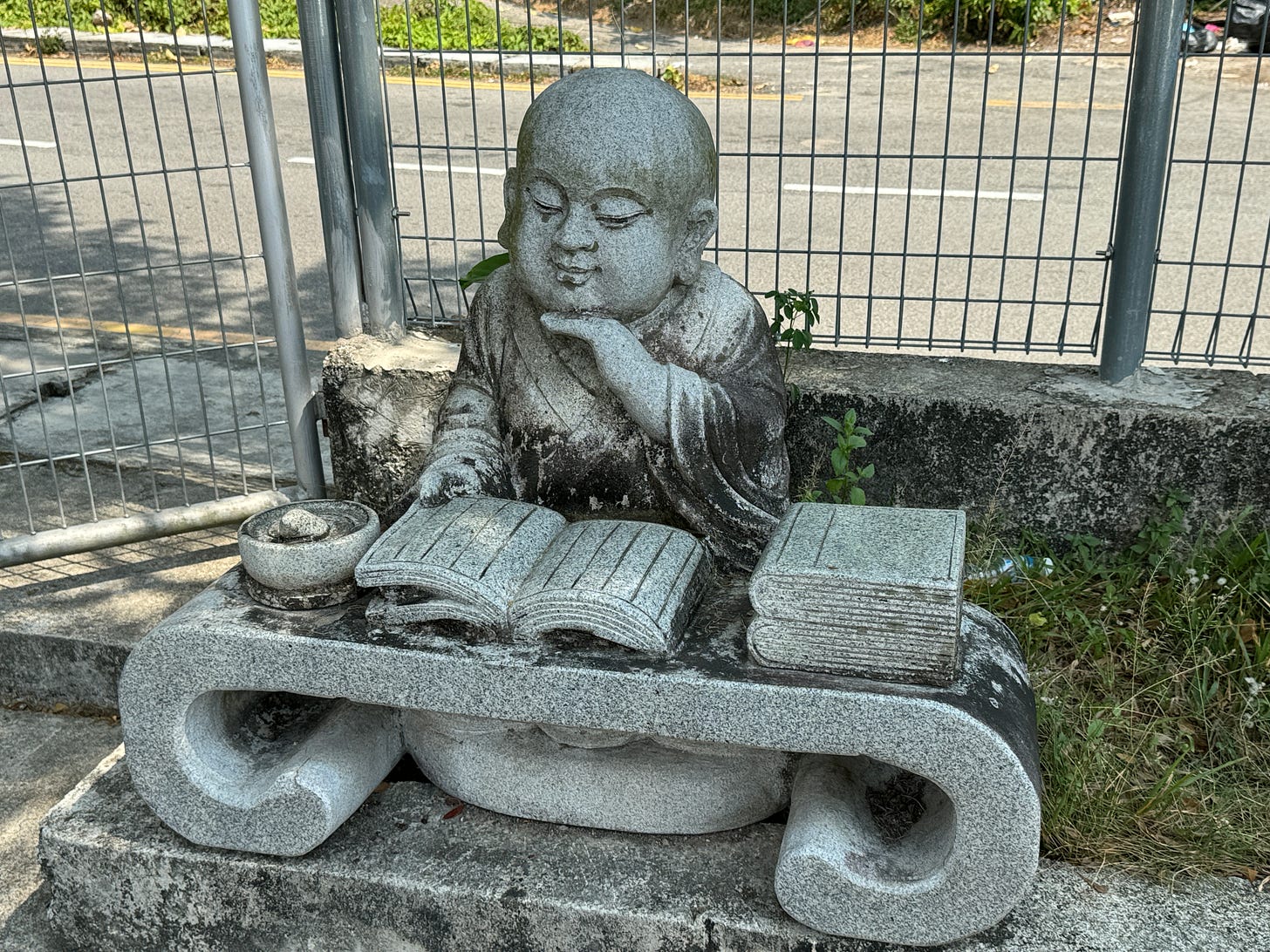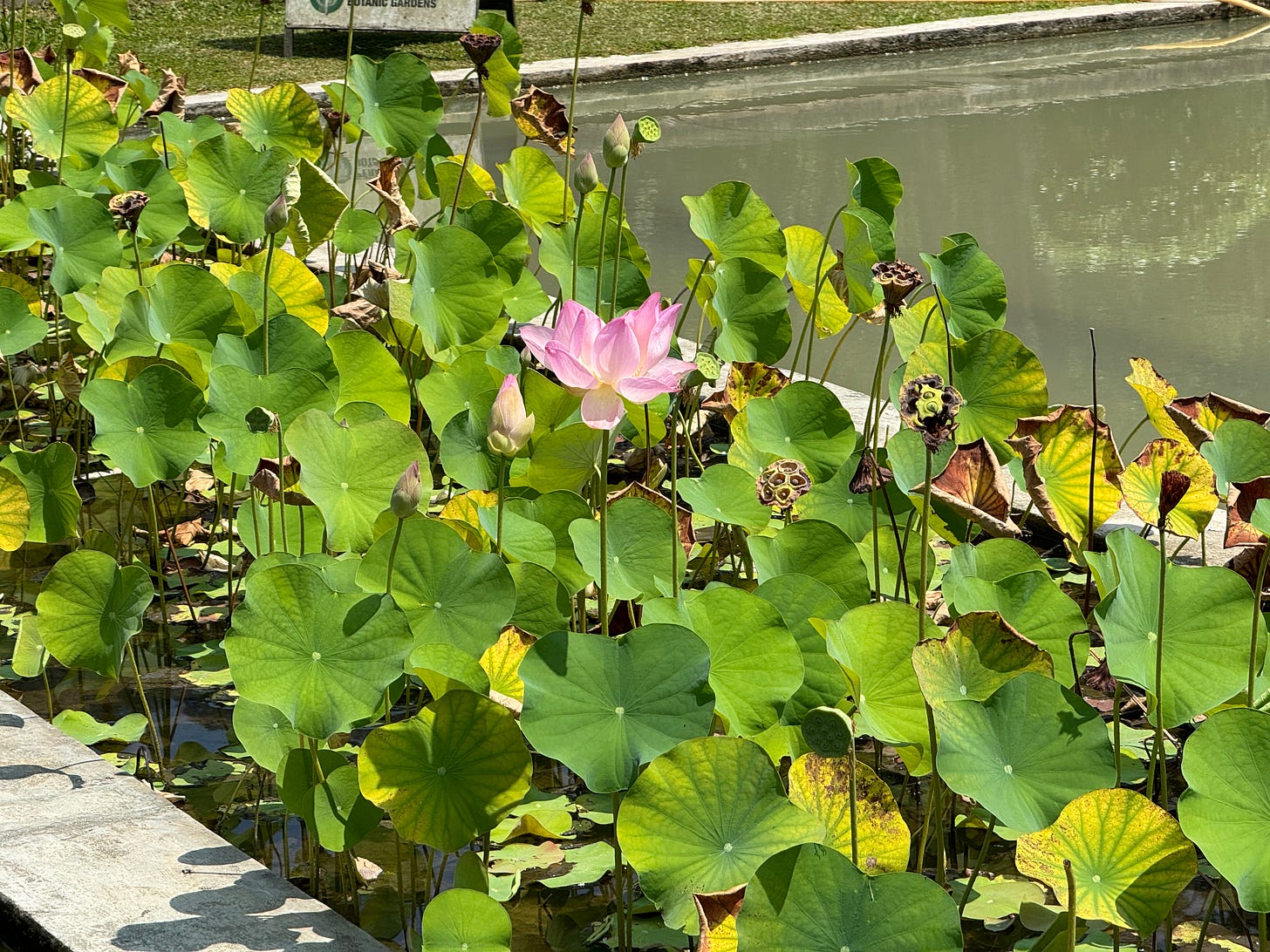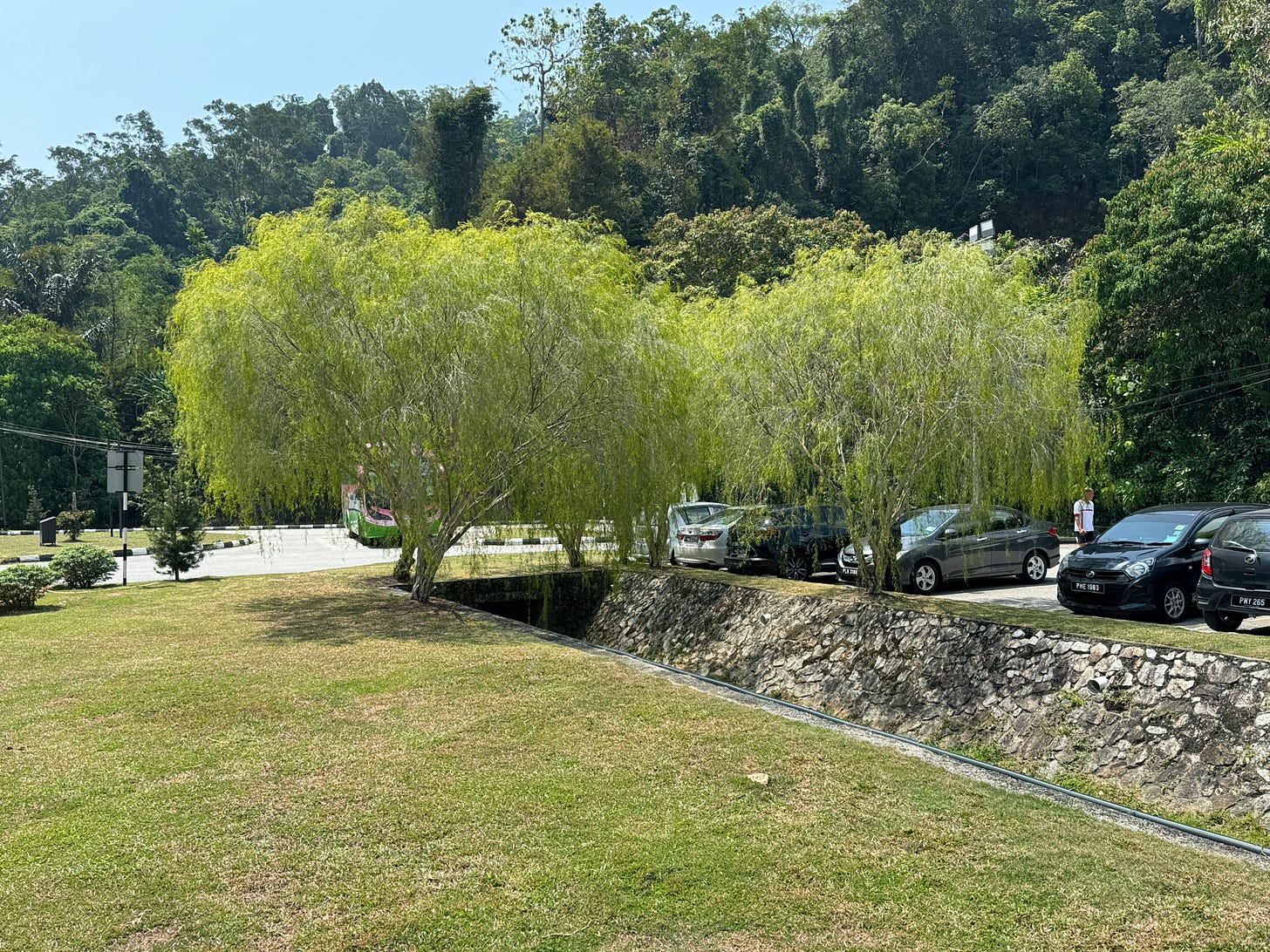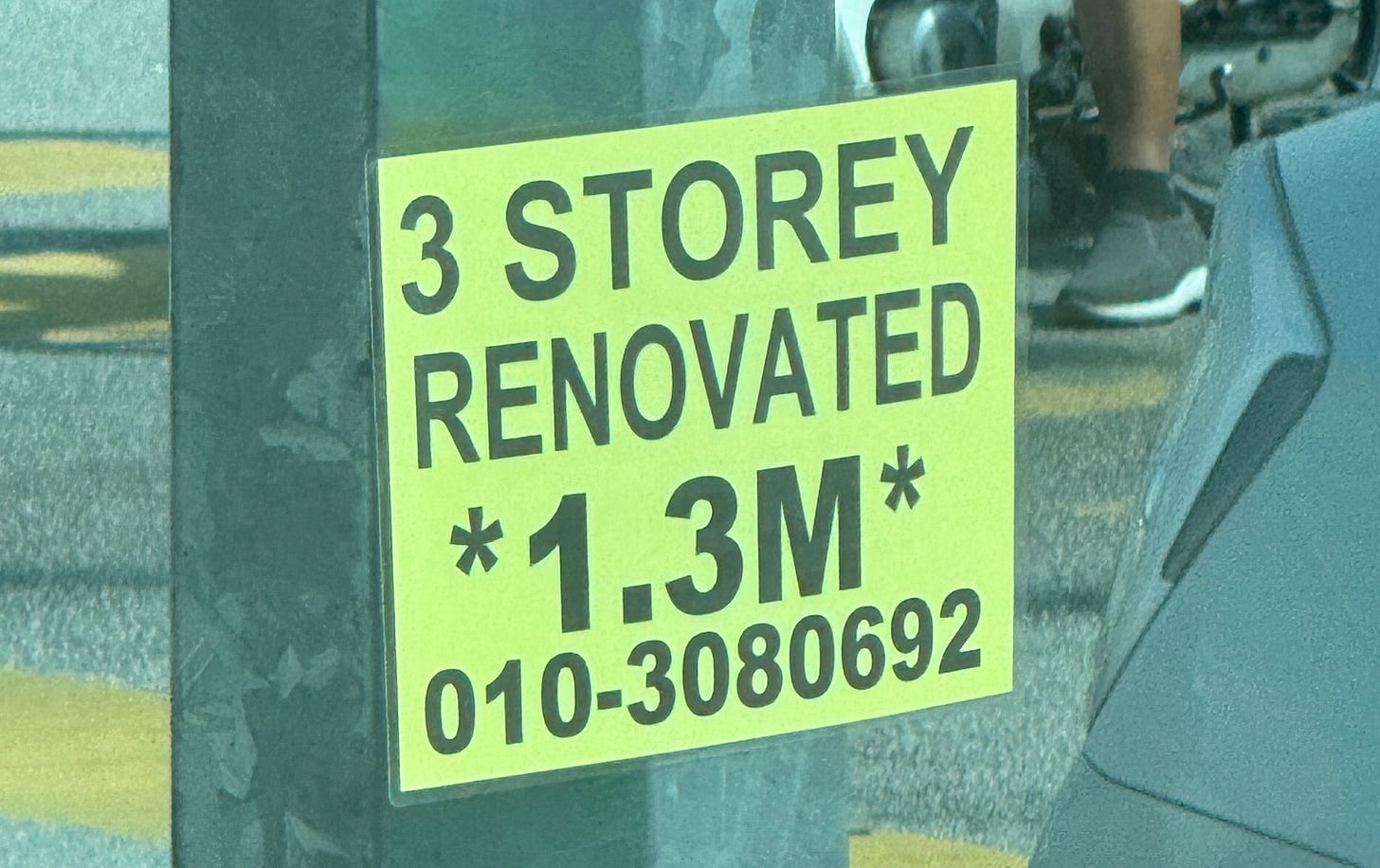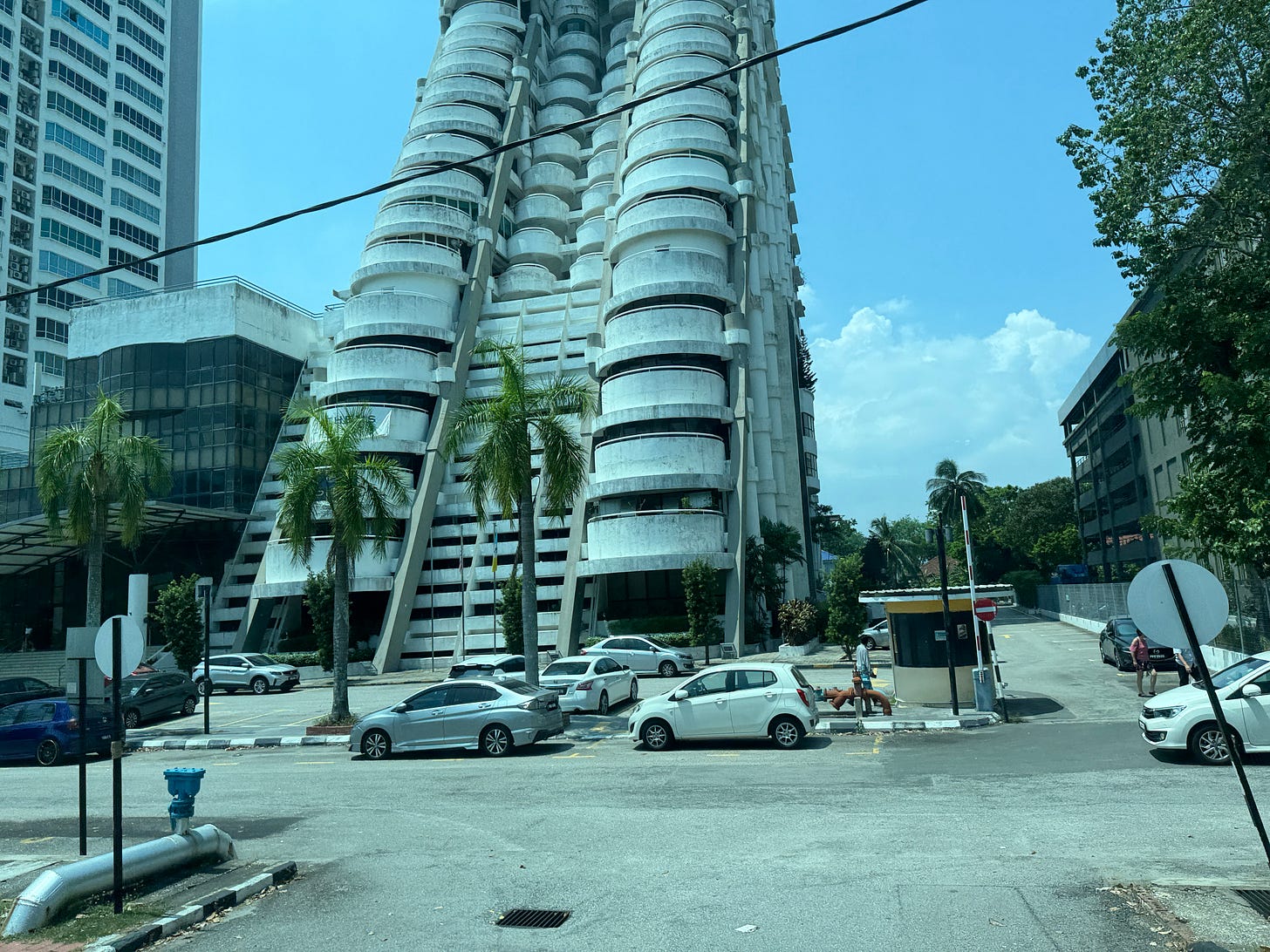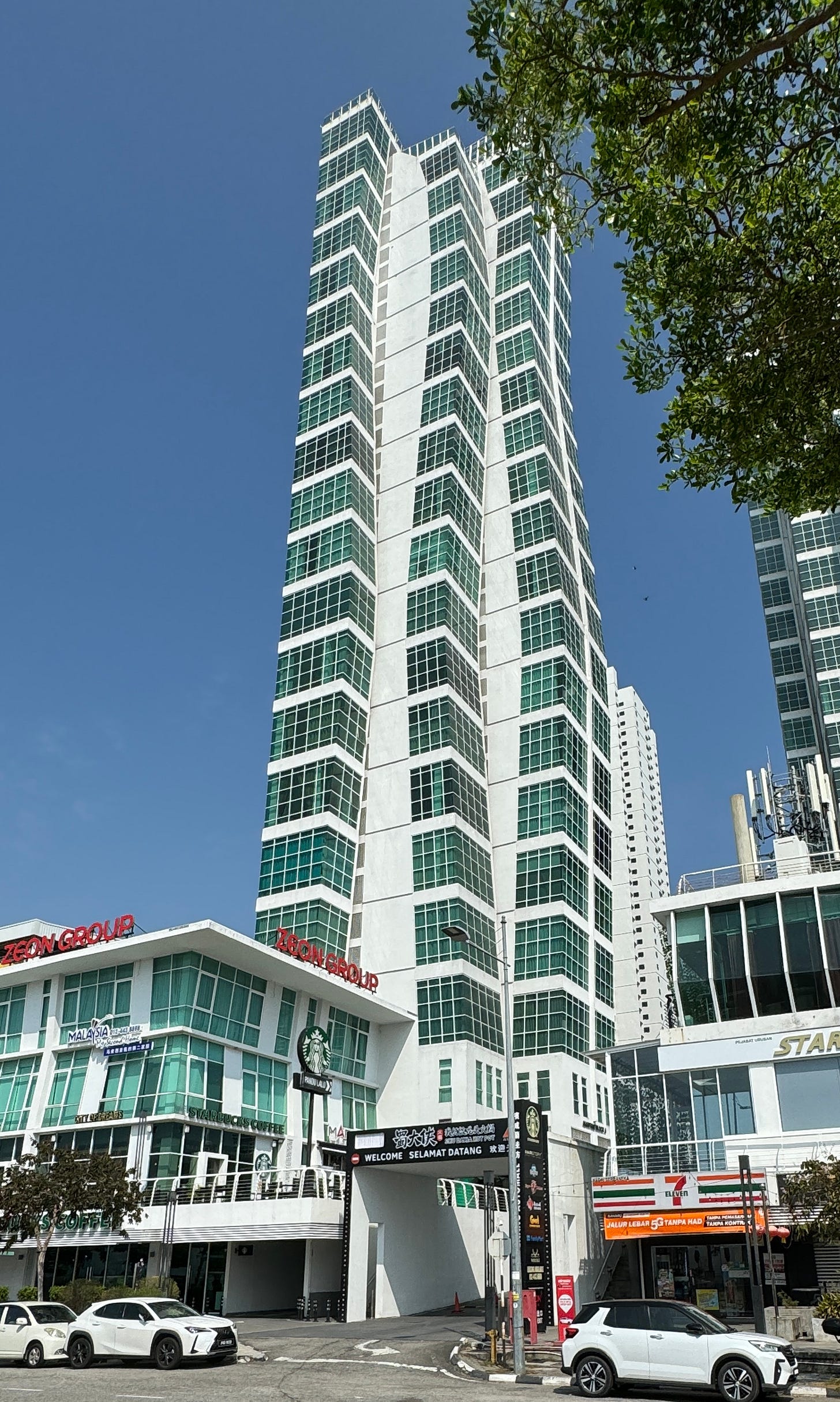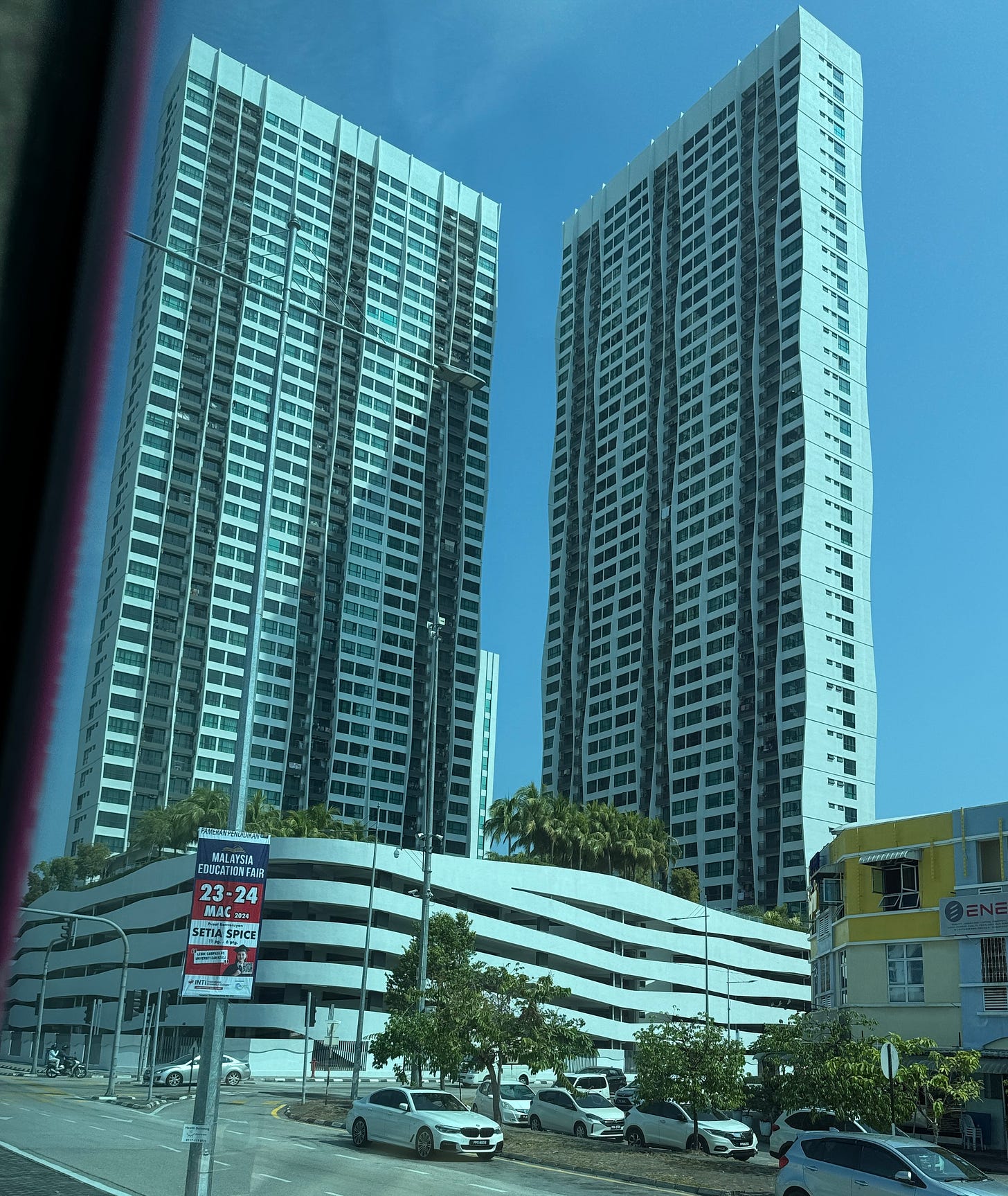St. Patrick's Day in George Town, Malaysia
Sorry, no one was wearing green in this town with no Irish heritage! Chinese, British, Indian and Malay influences are about all there is. They compensate rich people to move to this thriving island.
America is just waking up to St. Patrick’s Day and the sun has set on the Strait of Malaca on our way to Phuket, Thailand, as I write this. We spent the day in a Malaysian port with a British name on the map — George Town — but locally known as Penang. We took the included 3-hour bus tour called “A Snapshot of George Town.” Unlike Langkawi (yesterday), this is a thriving island off the coast of Malaysia, connected by a long bridge to the mainland. Our guide, Lawrence, said it’s good we didn’t come five days ago, when they had a “heat wave” — 100F/38C. Today was just very hot — 89F, humidity 63%. It was sunny, so we were always seeking shade when not on the bus.
First we drove through the downtown and historic areas, with great (and understandable!) narration by our tour guide, Lawrence. We saw lots of old British buildings, plus modern skyscrapers (including one 68 stories tall) built well after WW2, during which the island was occupied by the Japanese and served as the invaders’ submarine base. It had been bombed heavily beforehand, leaving their famed clocktower standing at an angle.
Our first stop was the Harmony Street area where we walked around looking at different shops and buildings. We visited an impressive gold Hindu storefront temple and saw some impressive street murals.
The following mural focuses on the harmony among the island’s different cultures — Indian, Chinese and Malay:
Here are some other pictures from this walk:
The exchange rate is 4.7 Malaysian Ringgit to the US dollar, so treats were inexpensive and every merchant takes credit cards - touch, no signature.
Then we drove to a huge Buddhist temple on the hillside, but only to view from outside. It would have been a lengthy tour in itself to enter!
There was a nice display of Buddhas, including a half-dozen baby Buddhas in the parking lot. Here’s just one:
From there we did a photo stop outside the botanic garden. It had been created by the British to discover what grows well here and to develop new flora.
Finally, we drove back to the ship via the section where the rich and ultra-rich people live. One building boasts condos measuring over 10,000 sq. ft. Lawrence told us you can rent a 3-bedroom, 1,200-foot condo in a high-rise for about $800 per month, and I saw this sign on a lamp post. It equals $276,595 at the current exchange rate.
Lawrence told us that if a foreigner deposits $500,000 in a Malaysian bank, they can get a 10-year visa, which can garner a Malaysian passport after that. The smallest car from Malaysian automaker Proton (looks like a small Toyota) costs about $6,000, but the tax on cars is 138% which would add another $8,280. Luxury cars have a 300% tax on them. I saw a few high-end Mercedes.
I saw one Tesla, but gasoline is so cheap here (under $2/gallon based on the price per liter Lawrence quoted) that people aren’t interested in them. Malaysia is a big oil producer (mostly offshore) and refines its own oil. Tesla did open a 55,000-sq.-ft. “facility” in the industrial area outside Kuala Lumpur last June, and two Chinese EV-makers are looking to build cars in Malaysia - BYD and Geely.
Here are some of the modern buildings we passed.
There were three lectures today, and we caught them all. Our buffers are full! The first one was about the animals of Southeast Asia. The second was about Buddhism, and the third was about the Indian Ocean. We learned a lot from each, of course, but I’m not going to share any of the slides I photographed. Bedtime!
Bye for now.


